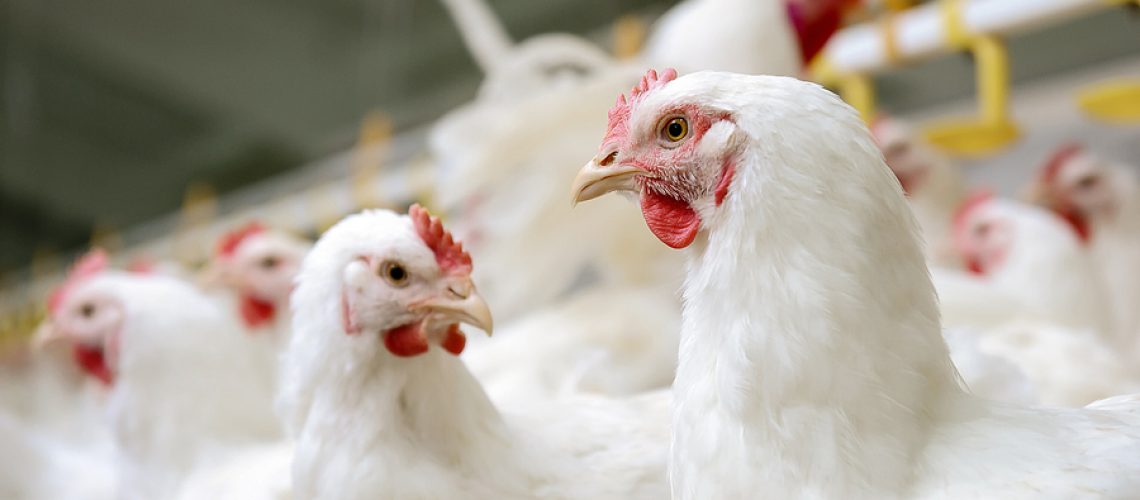Avian flu will begin to project a negative inflationary effect within food products.
Cases of seasonal and Covid-19 disease are beginning to pose a threat in U.S. hospitals.
The U.S. is one of the world’s leading chicken exporters, with a 55 percent share of chicken exports.
The world will have to pay attention to a new threat, since in the United States a strange combination of avian flu, also known as avian influenza, and Covid-19, has begun to saturate hospitals once again, with projections of a catastrophic inflationary effect.
This recovery process, which in the economy and in the health sector has been called “interepidemic”, could not only return to a state of pure pandemic, but in the worst case it could be declared a “tripledemic”.
Although the virus had not left the U.S. borders, yesterday, October 24, the Ministry of Agriculture notified that the first two cases of H5N1 were detected in Metepec and Rio Lerma, in the State of Mexico. This was announced after the National Service for Agrifood Health, Safety and Quality (SENASICA) confirmed that the cause of death of a gyrfalcon was the highly pathogenic avian influenza AH5N1, while hunting birds in the Lerma River basin.
It was the Ministry of Agriculture itself that mentioned in a communiqué that the cases would be attended with high priority to avoid repeating a scenario like the one currently being experienced in the United States:
“With the objective of protecting poultry production from highly pathogenic avian influenza (HPAI) AH5N1 and to advance in the control and eradication of HPAI H7N3 throughout the country, the Secretariat of Agriculture and Rural Development reinforces epidemiological surveillance actions in the 32 entities and establishes new measures to guarantee that production units comply with minimum biosecurity measures (MMB),” the agency said through a statement.
To understand the economic risk burden of this disease, one would have to understand what it is and how dangerous it can be if it spreads beyond the U.S. territory.
What is avian influenza and what would be the inflationary effect of a “tripledemic”?
The Pan American Health Organization (PAHO) describes avian influenza as an infectious disease that mainly affects birds. It can be classified as “low pathogenic” or “highly pathogenic”. As is evident, the former can cause only mild disease in birds, while the highly pathogenic avian influenza virus, mainly due to subtypes (H5 and H7) of type A, causes severe disease that can spread rapidly.
The latter, in addition to producing a high mortality rate in different types of birds (60 percent), in some of its strains, can infect humans. In addition to this, the main factor of contagion may be direct or indirect contact with infected animals, as well as environments and surfaces contaminated by feces.
However, this is not a case of common avian influenza, as many experts claim that it is a greater threat. The consequences of this could be catastrophic in the short and medium term. Therefore, it would be worthwhile to consider the issue from two main fronts: the health sector and the economic sector.
Impact on the health sector
By now, many will have heard that there are indications of a possible “tripledemic”. This term refers to the possible simultaneous explosion of Covid-19, avian influenza and respiratory syncytial virus (RSV) cases that are now beginning to overwhelm hospitals in the United States.
As the days go by, there has been an increase in the number of coronavirus infections, which would apparently be caused by this simultaneous outbreak of cases. However, the most serious of all is that these diseases, which mainly affect children, the elderly and pregnant women, have begun to present variants in symptoms that are similar to each other.
Most of the cases of these diseases, according to specialized personnel, have proven to be of low impact in recent days, however, together they have the capacity to sicken millions of people in the blink of an eye. In the same way, Andrew Read, a microbiologist at Pennsylvania State University, confirmed that the excessive increase of flu and RSV cases are coinciding with the effect of the decrease in immunity to Covid-19.
The recommendation of virology physicians is that, while Covid and avian influenza vaccines are not completely effective against a new strain, they are still the best option we have. On the other hand, for RSV there is still no vaccine available on the market, although Pfizer is already developing an antiviral drug. Each year, this disease takes the lives of 14,000 adults over 65 years of age and 300 children under 5 years of age.
The anticipation of these seasonal diseases worries mainly health specialists, who assure that it is too early to face this threat. In the case of avian influenza, it is currently spreading through Georgia, New York, South Carolina, Tennessee, Texas and Washington, D.C., according to the latest report from the Centers for Disease Control and Prevention (CDC). In addition, 80 percent of these, according to FluSurv-NET, are known to be in Georgia.


